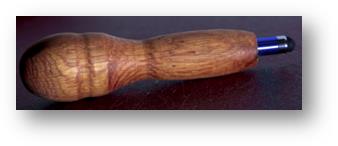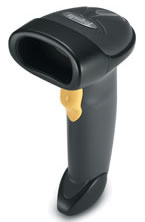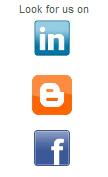
It is about this time of year when I long for sandy beaches and warm tropical waters. I am happy to give up the snow, wind chill and polar vortex for more pleasing surroundings. This picture was taken on Florida's west coast on Pine Island Drive in Hernando County overlooking Rock Island Bay. It is about an hour north of Tampa and the coastal waters are marshy and grassy as you see. The temperature was 92 degrees when this picture was taken.
Capacitive?
Bar Coding Paper
XML
Welcome to News from trif.com! First time readers, I am glad you're here! Returning readers, welcome back!
Greetings. Welcome to our Newsletter! We wanted to share the many photos we have taken of places, people and things throughout the country and beyond. Each month our headline photo will be something new and different. The caption will present a small explanation. We hope you enjoy. Keep in mind, we don't want to waste your time. Articles will contain generally less than 250 words. Please have a look and give us your feedback. By all means, forward to a friend using the link at the bottom of the Newsletter. Thanks. Questions? Send me an email!
TRIF.COM
Technology Resources
Technology solutions are a part of doing business just like sales and marketing, It is an important component in servicing customers, managing costs and controlling operations. Our capabilities bridge database design and development, Internet services, network and computer sales and support, document imaging, bar code scanning, corporate communications, fax and email programs, mobile applications, cloud computing and help desk services. Interested in taking a step forward with technology? Looking to take advantage of the latest advances? Or just want to take advantage of your new computer?
Email me at rmj@trif.com The first consultation is always without charge.
Can you say Capacitive?
What is a stylus? What is a capacitive stylus? Do we even need one? Let’s ask Steve Jobs. Going back to 2007, Steve always thought we didn’t need a stylus when we could use any one of our ten fingers. Why? He thought we would lose them (we do), he thought it wasn’t natural (it  isn’t), he thought we should use the best pointing device in the world – our finger (he was right). However, there are many applications that just feel better with a stylus that feels like a pen, a pencil or a brush. I have a number of styli (plural for stylus).
isn’t), he thought we should use the best pointing device in the world – our finger (he was right). However, there are many applications that just feel better with a stylus that feels like a pen, a pencil or a brush. I have a number of styli (plural for stylus).
But I set out to create my own unique stylus. I wanted something heartier, heavier and comfortable to hold. Pictured here is the utensil I created from an old tree I found in the back yard, my lathe and an old metal stylus I had laying around. Along the way, I discovered the science behind a capacitive stylus required for capacitive sensing screens like iPad’s and iPhones. Creating a capacitive stylus requires that the tip of the stylus transfer the static electricity from a person’s hand to the sensors on the screen. In essence, it needs to conduct electricity. So how did my primitive custom stylus work out? Not so hot. If my fingers were close to the metal stylus tip, it worked great. If I held this device on its end away from the tip, it did not work at all. Solution? Wrap the entire wooden object with aluminum foil. That worked great -- until the aluminum foil tore or just fell off in which case I was back to square one. You see, wood is not a good conductor of electricity. Who knew that was important!
So I am heading back to the drawing board searching for a wood like product that can be molded but also conducts electricity. Stay tuned!
Bar Coding Your Paper
We all know that almost all warehouse product is bar coded and merchandise in the stores is bar coded. For years, we  have written software supporting the use of scanners and portable data terminals (PDT's) in the warehouse and shipping dock. More recently we have written software to support the use of bar codes on paper. Of all the time saving changes our clients can make, it is putting a bar code on frequently referenced paper work that can have the greatest impact. Each piece of paper can be scanned instead of entered manually on the keyboard. It saves time in the office and improves accuracy.
have written software supporting the use of scanners and portable data terminals (PDT's) in the warehouse and shipping dock. More recently we have written software to support the use of bar codes on paper. Of all the time saving changes our clients can make, it is putting a bar code on frequently referenced paper work that can have the greatest impact. Each piece of paper can be scanned instead of entered manually on the keyboard. It saves time in the office and improves accuracy.
Great opportunities for creating efficiencies are invoices, statements, quotes, manifests, purchase orders, bills of lading, and anything else that hits your desk more than once.
We print the bar codes on all the documents to get the ball rolling and then we employ an inexpensive scanner (pictured here) to scan the bar codes on the document which then adds it to a list, looks it up, closes it out or whatever repetitive task is required. This saves an extraordinary amount of time eliminating the entry of the identifying numbers or worse numbers and letters. Common applications would be assembling invoices to be included in a billing statement, adding pros to a manifest, adding bills of lading to a master bill or batch scanning related documents.
Consider how bar coding paper might impact your office operation.

XML
You have seen this term / acronym in past newsletters. It refers to a method of data exchange. I thought it might be valuable to take a deeper look into XML and explain why it is a powerful way to communicate information. XML or extensible markup language is just that, a language. As with all languages, there are rules. It is not unlike EDI (electronic data interchange), but the rules make it easier to use, debug and read. The benefit of XML is that the format is both machine-readable and human-readable. That is, it makes sense. Here is an example:

As you can see, the XML data is clearly defined and laid out. There are 4 fields listed within a header section called note. Each field is listed in its own section defined by a start tag <section> and ending with an end tag </section>. In the example, the fields are to, from, heading and body. The values or content of each field are displayed between the section tags of the same name. That is almost all you need to know. But there is so much more power included in the language of XML including document type definitions, schema, name-spaces, formatting objects, query's, encryption and standards. When communicating information across the Internet, XML is the preferred protocol for us to use.
If you have any questions about XML, please email us.
Have an Emergency? Need Support Now?
Email: support@trif.com
TRI
50 Leominster Road
Suite #3
Sterling, Massachusetts 01564
978-422-7770
rmj@trif.com